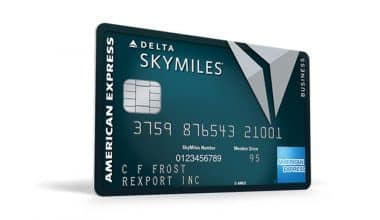Today’s best real estate investors see rent-to-own contracts for what they are: a valuable tool that can speed up the closing process. How? By providing freedom to both investors and home buyers. At the very least, this rarely used way of buying a home gives people another option for buying a home. This post will look at a rent-to-own contract home template and an example and see what happens if a landlord can break a rent-to-own contract.
What Is a Rent-to-Own Contract?
A rent-to-own contract for a home is a lease agreement between a buyer and a seller. The agreement allows a prospective buyer to rent a home until they can save enough money to buy it later.
The tenant will pay more monthly rent than the property’s fair market value over the contract term. The tenant will often have the option to buy the home or walk away at the end of the contract.
They will lose the extra money they paid each month if they take the latter option. If they want to take advantage of the option to buy, they have to apply for a mortgage. The total amount of the payments will serve as the down payment.
Types of Home Rent-to-Own Contracts
There are two types of rent-to-own contracts. The first is a lease agreement with a purchase option, and the second is a lease agreement with a purchase agreement.
- A lease agreement with the option to purchase. The name indicates that this contract provides an option to purchase the home. The phrase “option” is a distinguishing feature in this type of rent-to-own contract. If the tenant decides not to buy the home in the future, the contract does not bind them legally.
- A lease agreement that includes a purchase agreement. Once again, the name is the most important descriptor of this agreement option. This is the less flexible of the two options because it requires or legally obligates the tenant to purchase the property after the lease portion expires.
Can a Landlord Break a Rent-to-Own Contract?
A landlord is legally bound by a contract, just as renters are. That implies they cannot break the contract without incurring legal repercussions. Some contracts may explain why a landlord may break the contract, such as if the tenant cannot make monthly payments or maintain the home.
Rent-to-Own Contract Example
A proper rent-to-own contract should include due dates, escrow, and if the monthly rent will be applied to the home’s purchase price. A rent-to-own agreement is between multiple parties involved in leasing a property. It lets tenants buy the property when the leasing period is over. A rent-to-own contract must follow state rules for landlord-tenant leases and real estate commission laws.
Understanding a Rent-to-Own Contract Template
A rent-to-own contract template shows the most important parts of a contract and is only meant to be used as a guide.
#1. Understanding the Contract
The rent-to-own contract example offered here is strictly for educational purposes. It’s not meant to be legal advice, and you shouldn’t use it that way. Any contract should be governed by the characteristics of the home, location, circumstances, state law, and the parties’ intent. Always consult a lawyer before entering into any legal transaction.
#2. Parties and Property Identification
The first section of this rent-to-own home contract template defines the parties and the property to be rented, potentially sold, or purchased. In this part, it’s essential to be specific, so include full names and the full address of the property. This clarifies who is bound by the contract and what property is included in it.
#3. Obligations Under Contract
The second section of a rent-to-own contract template outlines what the homeowner, property owner, and tenant must do following the contract signing. The terms in the rent-to-own contract example are fundamental and legal in most states.
This part of the contract says how long the lease will be, how much the rent will be, and if there will be a security deposit. Most states require that these parts be filled out before a contract can be considered legal.
#4. Purchase of Rights
The rent-to-own option is established in the third part of this contract. This provision does not force the tenant to buy the property but requires the homeowner to make the property available for sale to the tenant at a particular time. This requirement is what distinguishes the contract from a standard rental agreement.
The duties and rights spelled out in this contract are essential and necessary for making this kind of agreement official. Additional obligations and responsibilities can be added to or withdrawn from this contract if specified in writing and signed by both parties.
#5. Clauses of Termination
The last part of the contract says what will happen if one party gives up on the property or doesn’t do what they agreed to do. This clause protects both parties if the other party fails to fulfill its end of the contract.
#6. Contract Completion
The contract’s execution section is toward the end. This part of the contract has to be signed, dated, and notarized by both parties for the contract to be valid and binding.
What are the Benefits of Rent-to-Own Contracts?
Rent-to-own contracts serve a specific function and should only be used by those who require them. If nothing else, implementing a rent-to-own contract will benefit everyone. Those who do end up with a rent-to-own contract may be able to expect the following benefits:
- Prospective tenants may be able to purchase a home for far less money upfront.
- Buyers may apply a percentage of their monthly rent toward the upcoming down payment and purchase price.
- The purchasing price is entirely negotiable and predetermined.
- Buyers with low credit may obtain a home they would not have been able to obtain otherwise through a rent-to-own contract.
- It is possible to lock in a purchasing price in a market with rising prices.
- Buyers can “test drive” the home before committing to a purchase.
Are there any Downsides to Rent-to-Own Contracts?
Because of the nature of the real estate sector, every exit plan, including rent-to-own contracts, has some level of risk. There are several significant drawbacks to the technique. Here is a list of some of the potential drawbacks of rent-to-own contracts:
- Failure to exercise the buy option and walk away will result in the loss of the money paid above and beyond each month’s rent payment.
- Even if the renter enters a lease agreement with a purchase agreement, they are legally required to buy the home at the end of the contract’s terms, regardless of their condition.
- Renters do not own the property until the purchase option is exercised. Therefore, they have less control over the period preceding the transaction.
- There’s always the possibility that rent-to-own pricing will reduce over time.
- Because they are unilateral contracts, landowners must follow through if the tenant decides to exercise the option. The tenant, on the other hand, is not forced to exercise. Therefore, everything is up to him or her.
How to Set Up A Rent-to-Own Contract
Rent-to-own contracts are reasonably simple to set up as long as both parties agree on the terms. Setting up a rent-to-own contract begins and ends with the contract itself. To begin, the contract must state whether it is a lease arrangement with a buy option or a lease agreement with a purchase agreement. This is a significant difference because it determines whether or not the renter is legally required to buy the house when the contract is up.
The purchase price must then be determined and agreed upon by both parties. In most cases, the purchase price is comparable to close comparables. The renter/buyer will pay an option fee at this time. While applied to the purchase price later, this option fee grants the buyer the right to exercise the purchase option.
The renter and the landlord will then agree on a rental term, or how long the renter will be a tenant in the property before the option expires. The contract must specify who will handle maintenance issues before the renter moves in.
What are the Drawbacks of Rent-to-own Agreements?
The following are the disadvantages of a rent-to-own agreement:
- You could lose money.
- You may have to pay additional fees.
- Financing is not assured.
- You may have to buy the house.
How Do You Write a Rent-to-own Proposal?
Your proposal should include the non-refundable option fee, rental credits, and the price you are offering for the home. Following that, suggest a new lease for the rental period, usually one to three years. You expect to be able to purchase the house at the end of the lease.
What are Two Advantages of Rent-to-own?
Other advantages of rent-to-own include: Locking in a price while putting a percentage of your rent toward the purchase alleviates some of the stress of watching prices rise in the region where you know you want to live.
Does Rent-to-own Help Your Credit?
Rent-to-own deals don’t affect your credit score because credit agencies don’t know about them. If you haven’t said that you want to use the rent-to-own period to improve your credit score by making payments on time, you can ask the homeowner to report your payments to a credit bureau.
Why Do People Use Rent-to-own Stores?
The fundamental appeal of rent-to-own is that it allows rapid access to household goods without the need to save or make a long-term commitment. Both are particularly difficult for low-income families, who are less likely to have consistent incomes than wealthy ones.
Are Rent-to-own Homes legit?
Yes, buyers should be aware of several features of these transactions, such as complicated terms and the chance of losing money, according to David Mele, president of Homes.com.
Conclusion
Although starting a rent-to-own contract is significantly less popular than most forms of home sales, the procedure is nevertheless beneficial to prospective buyers. Rent-to-own agreements can benefit everyone involved, thanks mainly to the opportunity to negotiate contract conditions. Buyers, in particular, benefit from several advantages over standard mortgages, some of which may allow them to purchase houses they would otherwise be unable to afford. As a result, every buyer should understand how to create a rent-to-own contract.
Related Articles
- Rent To Own Homes: How To Rent To Own Homes
- RENT TO OWN HOMES: A COMPREHENSIVE GUIDE AND ALL YOU NEED (+ U.S LISTINGS)
- CAN A LANDLORD BREAK A LEASE?: What to Do When Your Landlord Breaks Your Rental Agreement
- LEASE VS RENT HOUSE: What are the Key Differences?
- Real Estate Trends: Comprehensive Market Trends 2023






